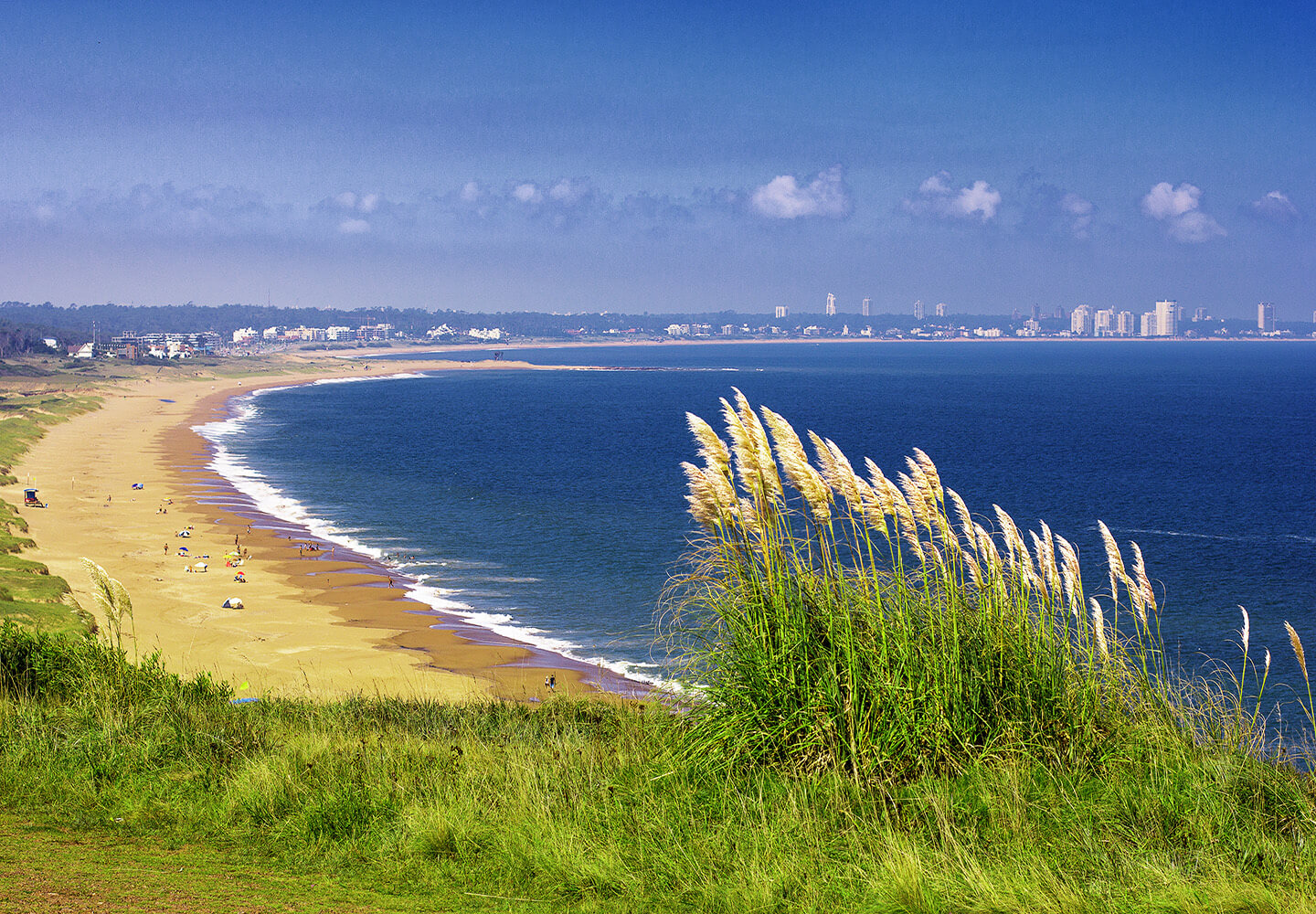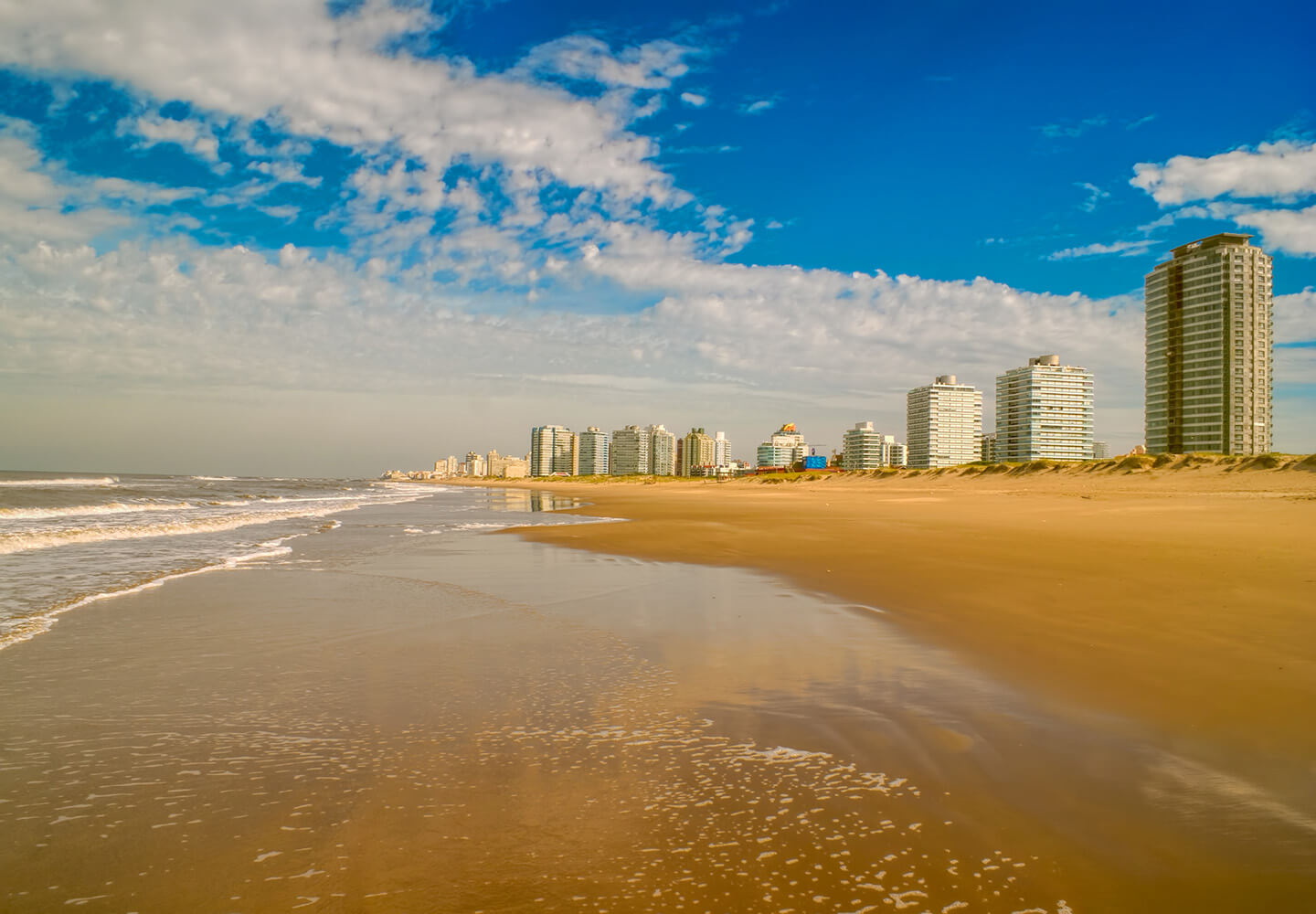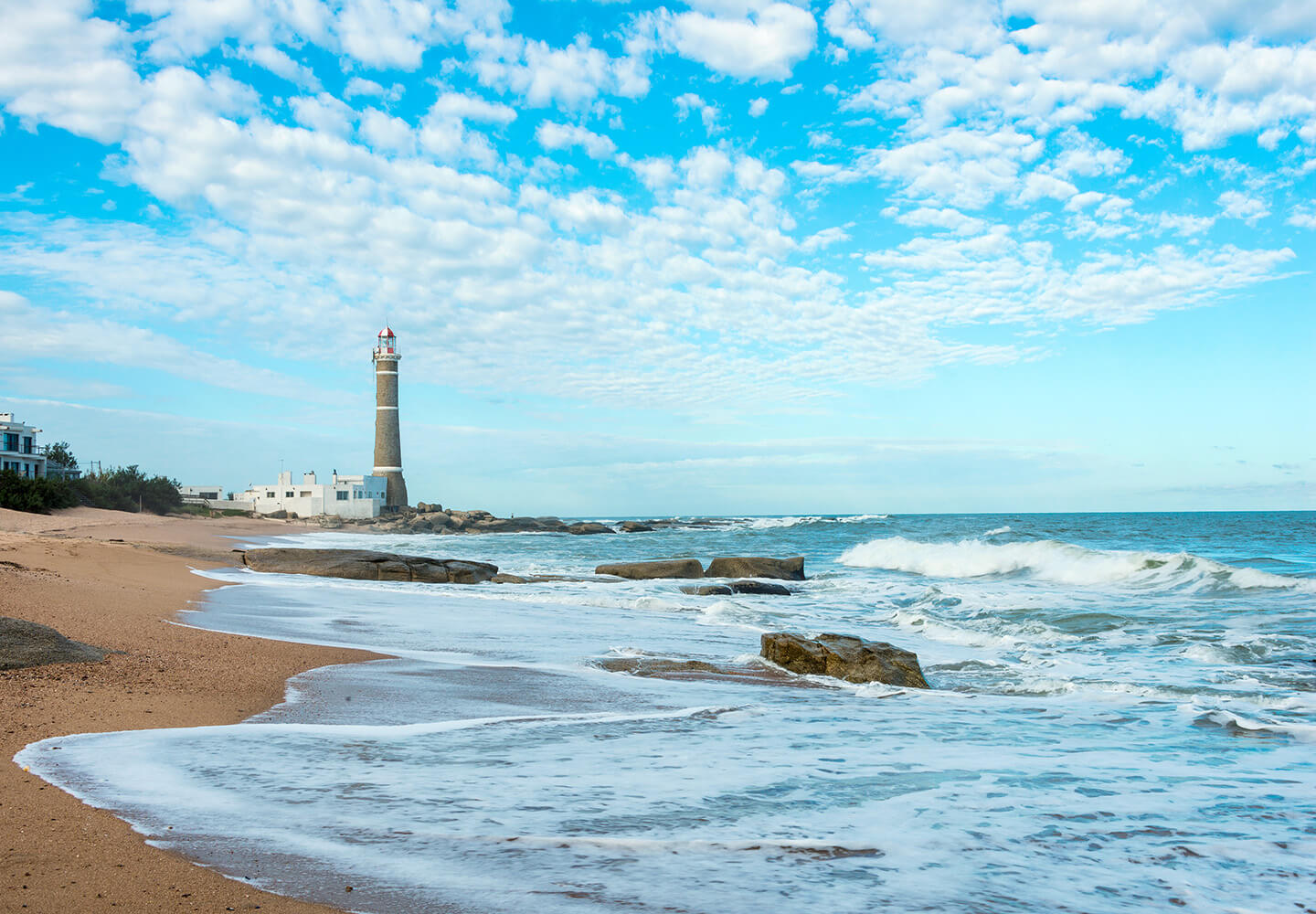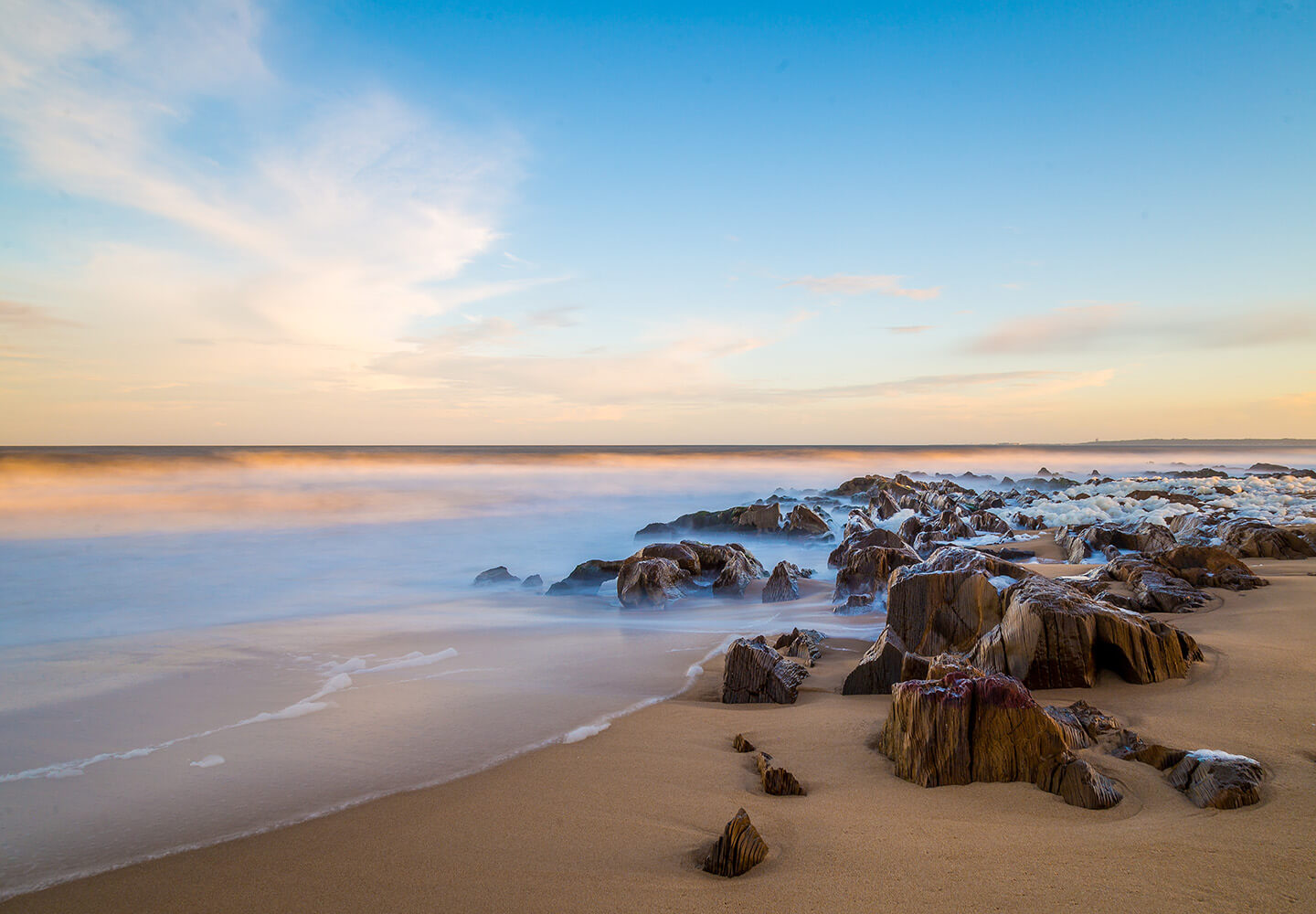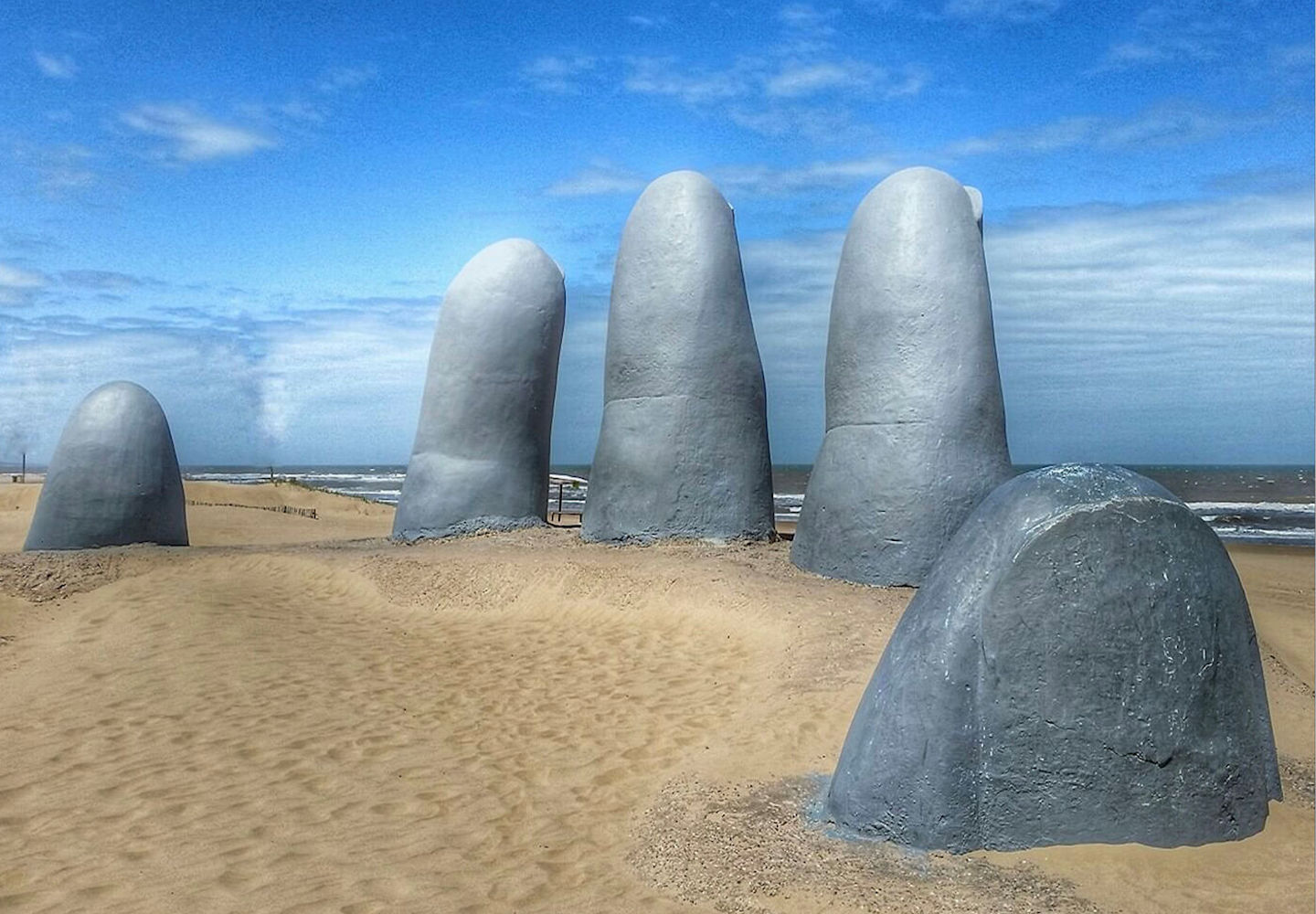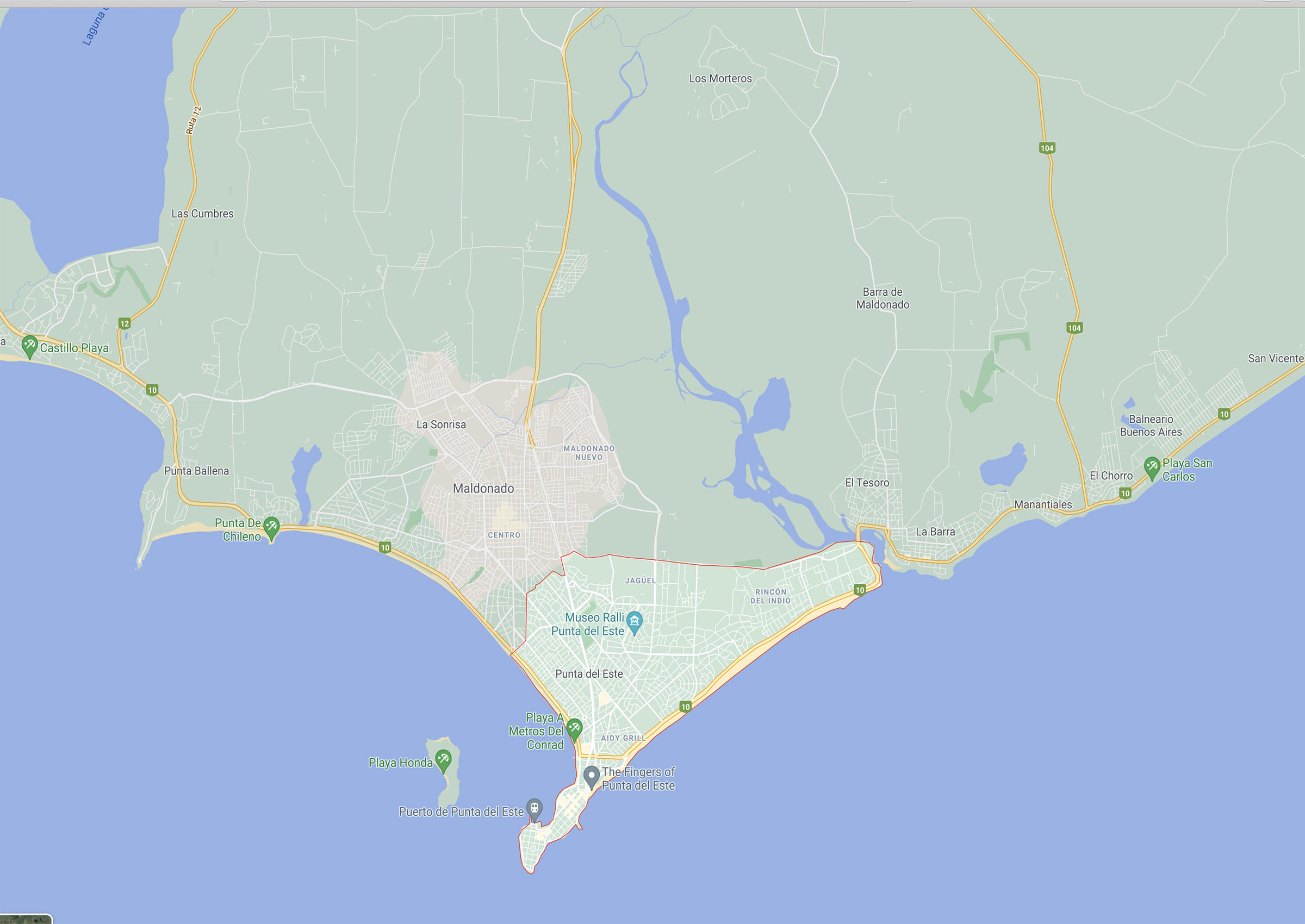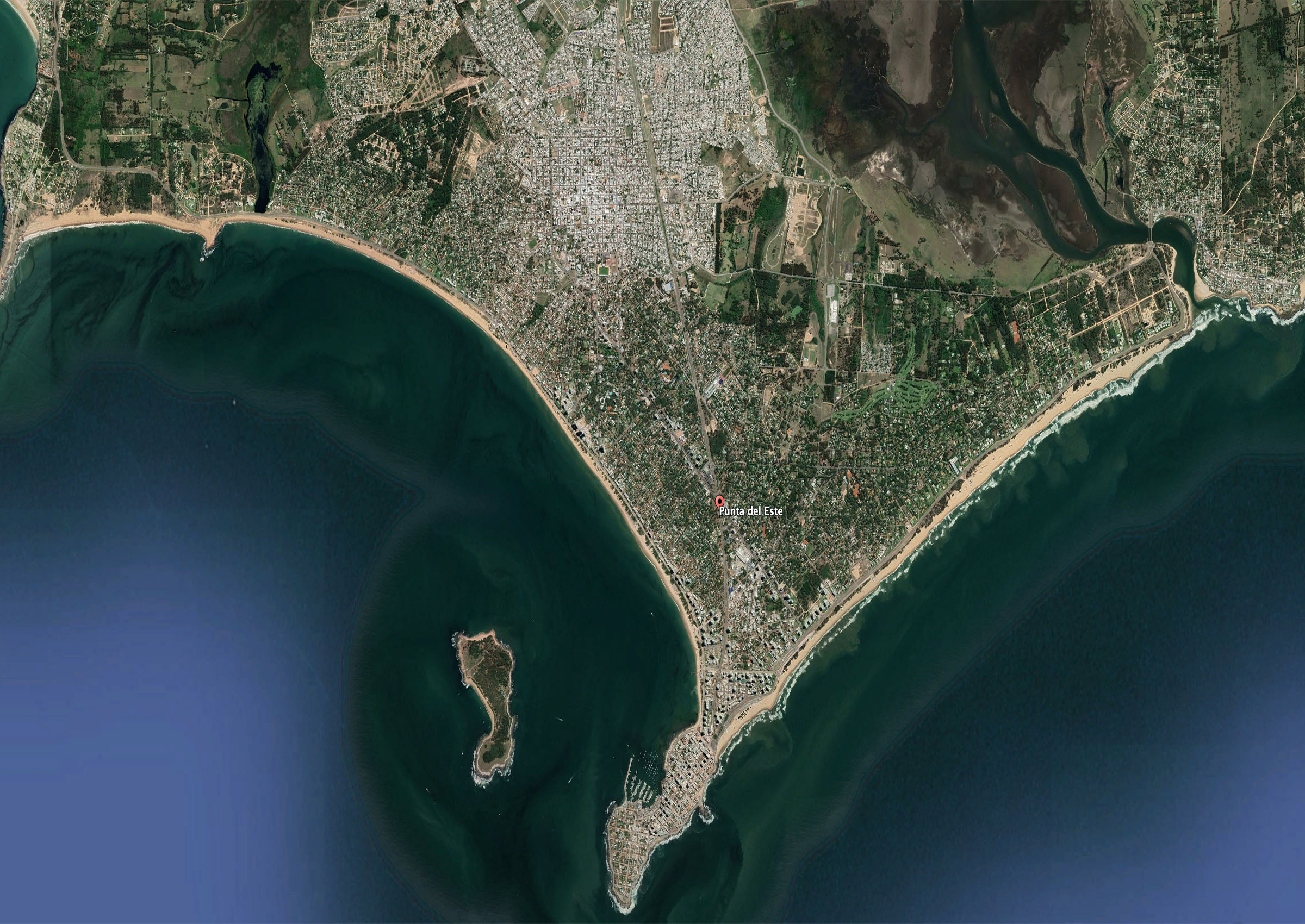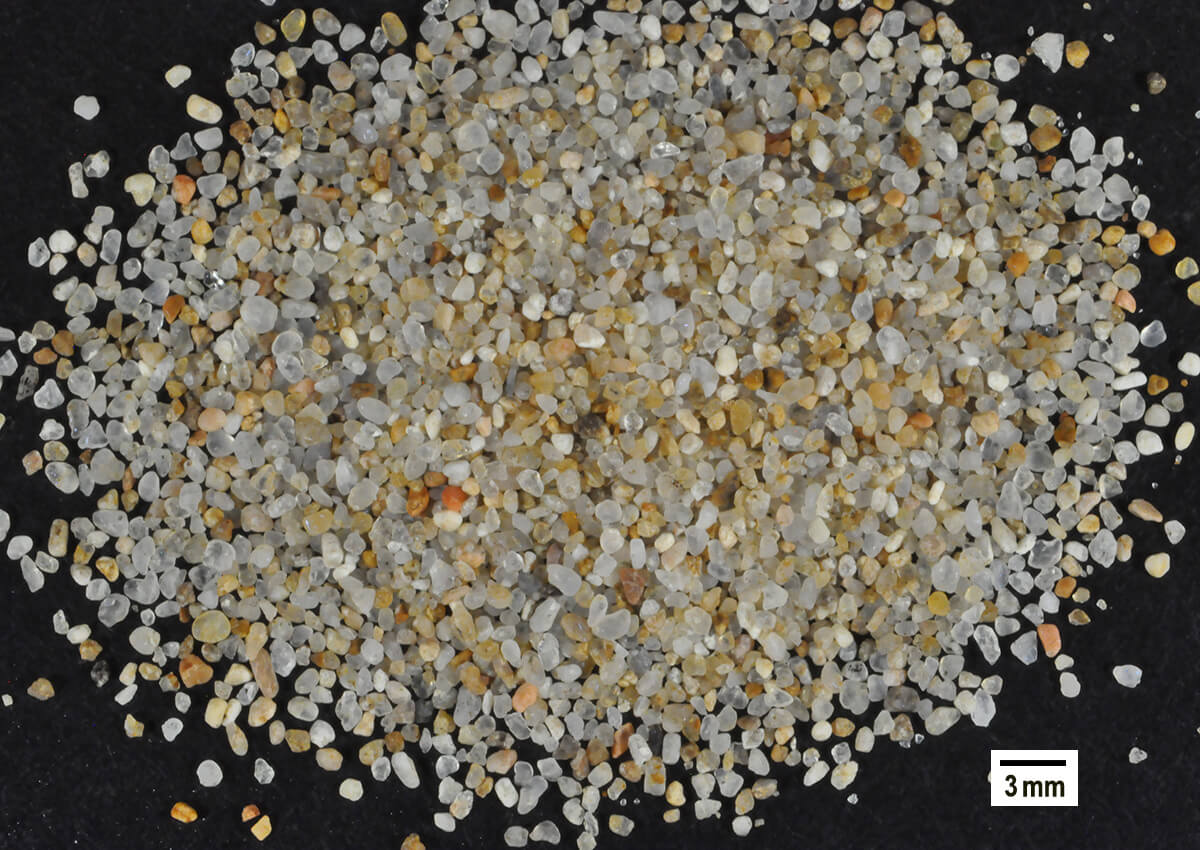
Uruguay is located on the Atlantic coast between Brazil and Argentina. Uruguay’s Punta del Este is located on 660 kilometers of a stunning coastline of beautiful beaches. The thick tan sand is derived primarily from igneous and highly folded metamorphic rock and includes quartz and reddish-tan alkali feldspar.
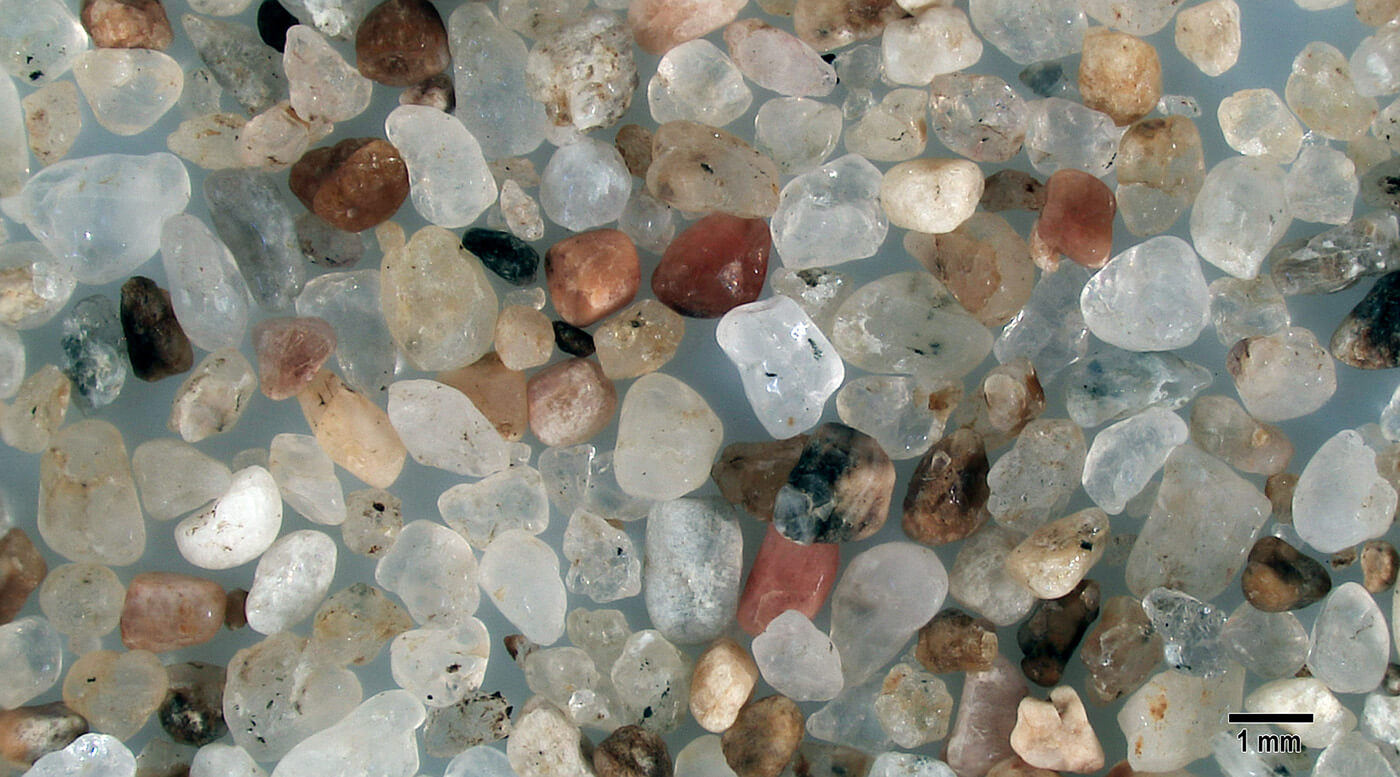
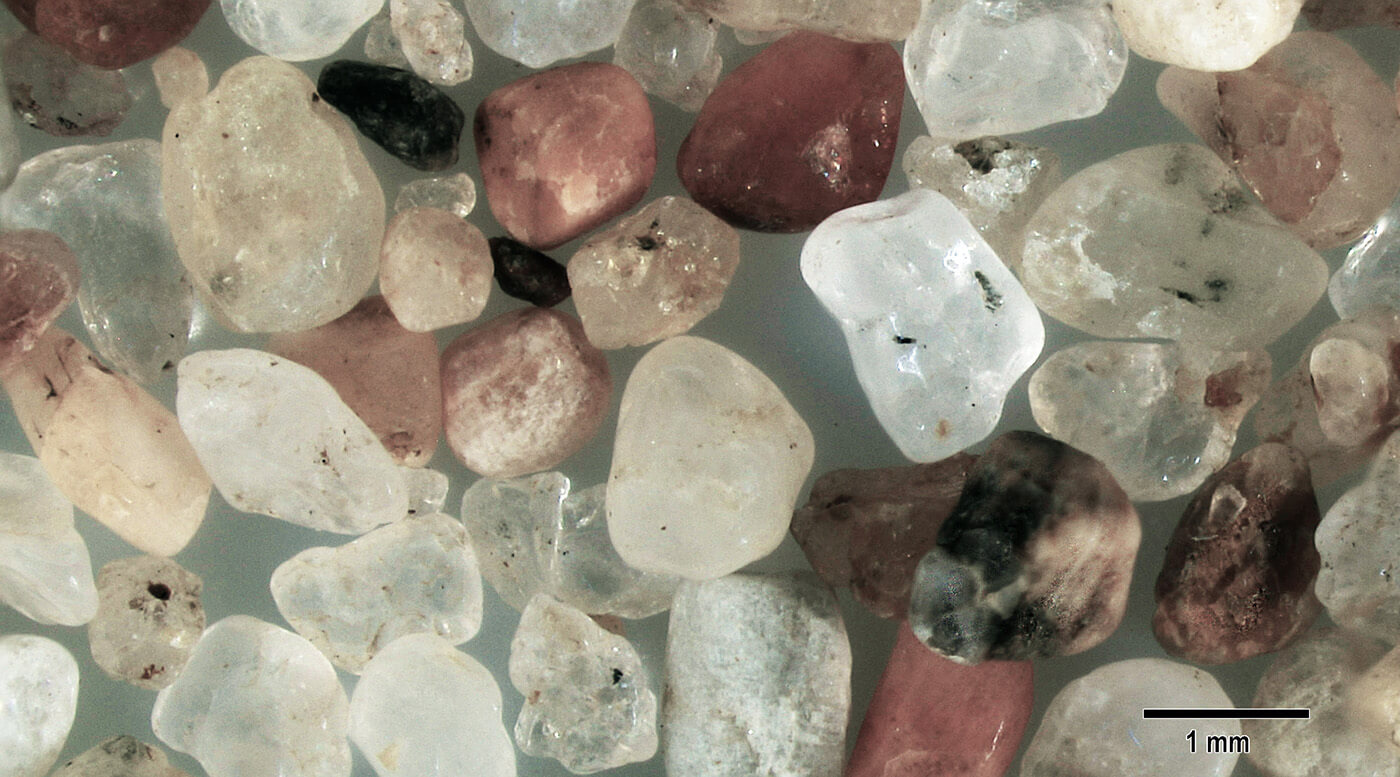
Smoothly rounded sand grains of clear and opaque quartz and reddish-tan feldspar attest to years of wave action. Black inclusions in several of the quartz sand grains are probably horneblende. Two mottled black and tan metamorphic sand grains are present just right of the center of the image.
Geographic Overview
The sculpture of a hand partially emerging from the sand is one of Uruguay’s most recognized landmarks and has become a symbol of Punta del Este. It was made by Chilean artist Mario Irarrazabal and unveiled in the summer of 1982 and marks the boundary between the Brava (Spanish for “fierce”) and Mansa (Spanish for “tame”) beaches. Punta del Este has been referred to as “the Monaco of the South”, the “Pearl of the Atlantic”, and the “St. Tropez of South America.”
Sand Gallery
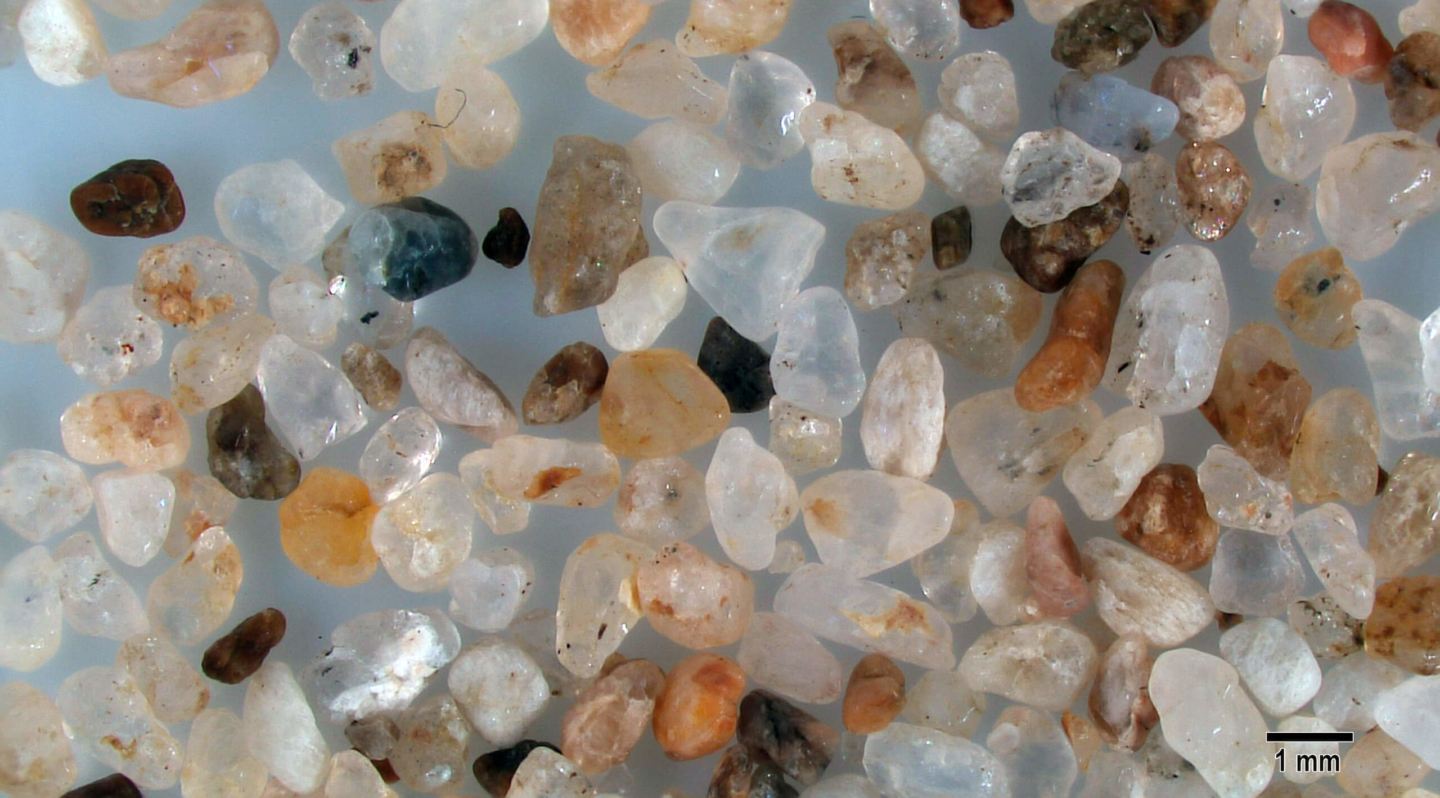
The absence of biogenic sand grains is evident in this image comprised of a mixture of clear and opaque quartz grains and tan alkali feldspar grains. A few dark grains of igneous and metamorphic are also present. The smooth contours of these sand grains reflect years of smoothing from beach wave action.
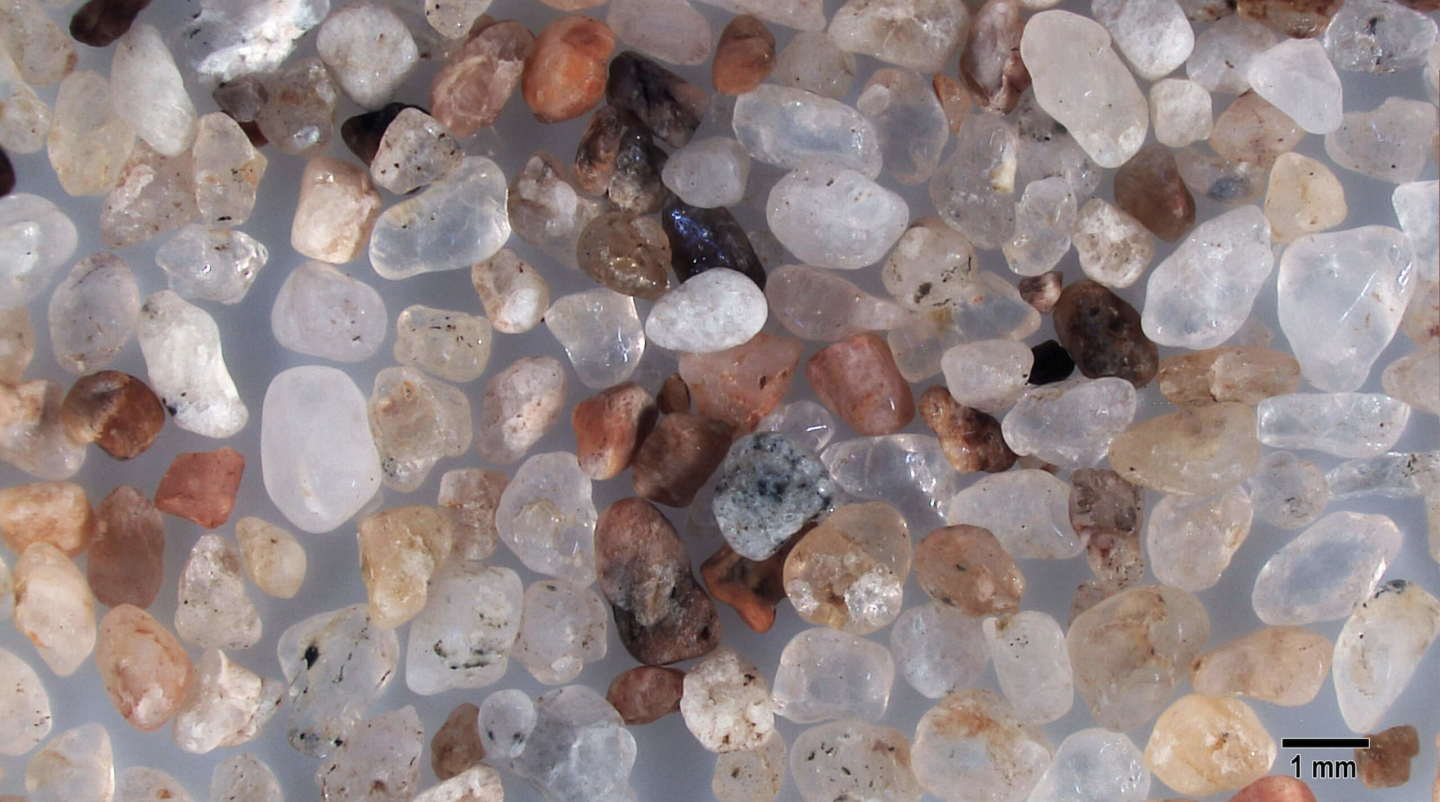
Smoothly rounded sand grains consisting primarily of quartz admixed with alkali feldspar. Black inclusions, most probably horneblende, are present in several quartz grains.
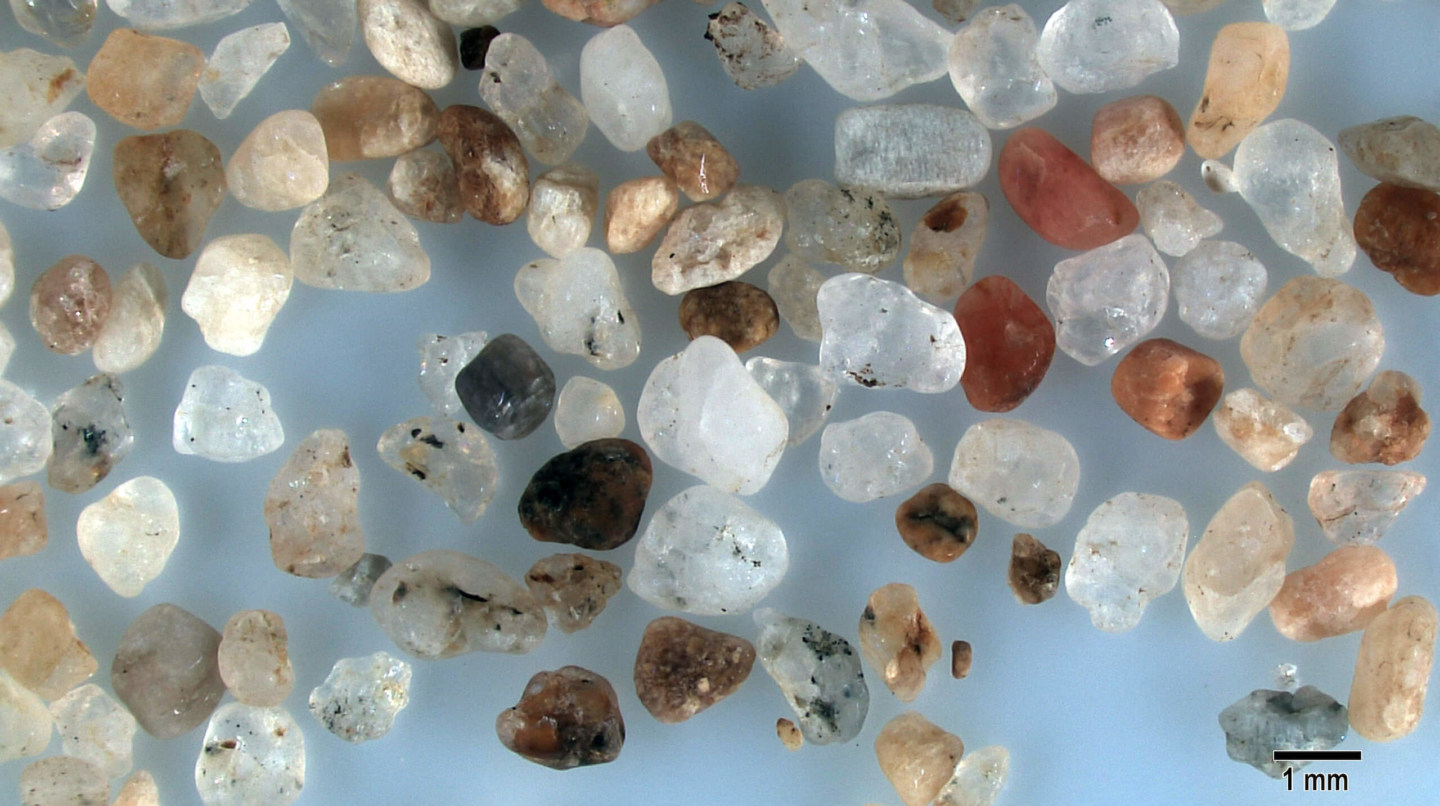
Black horneblende inclusions are present in several clear and opaque quartz sand grains. Reddish-tan grains are alkali feldspar and dark, mottled grains are from highly folded metamorphic rock.
